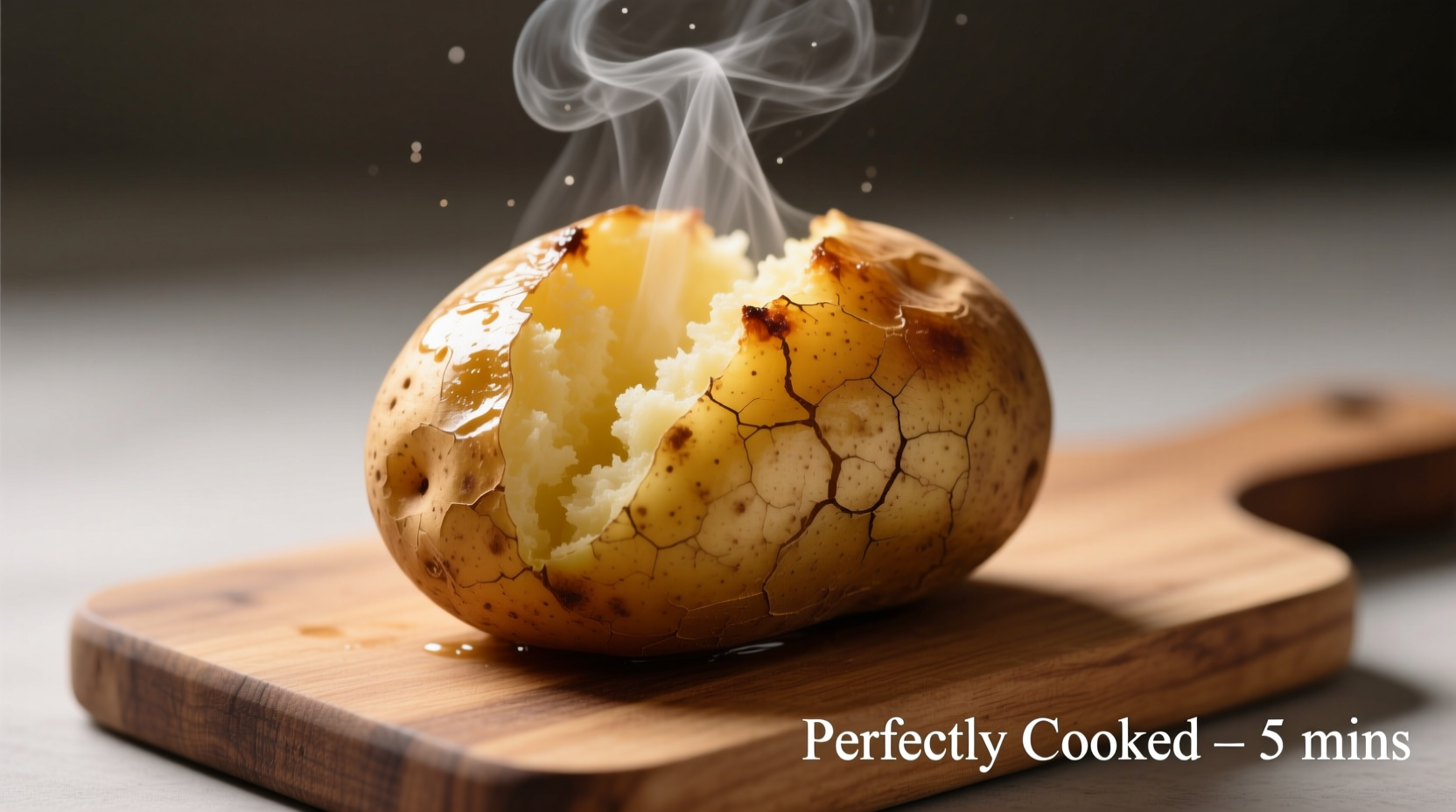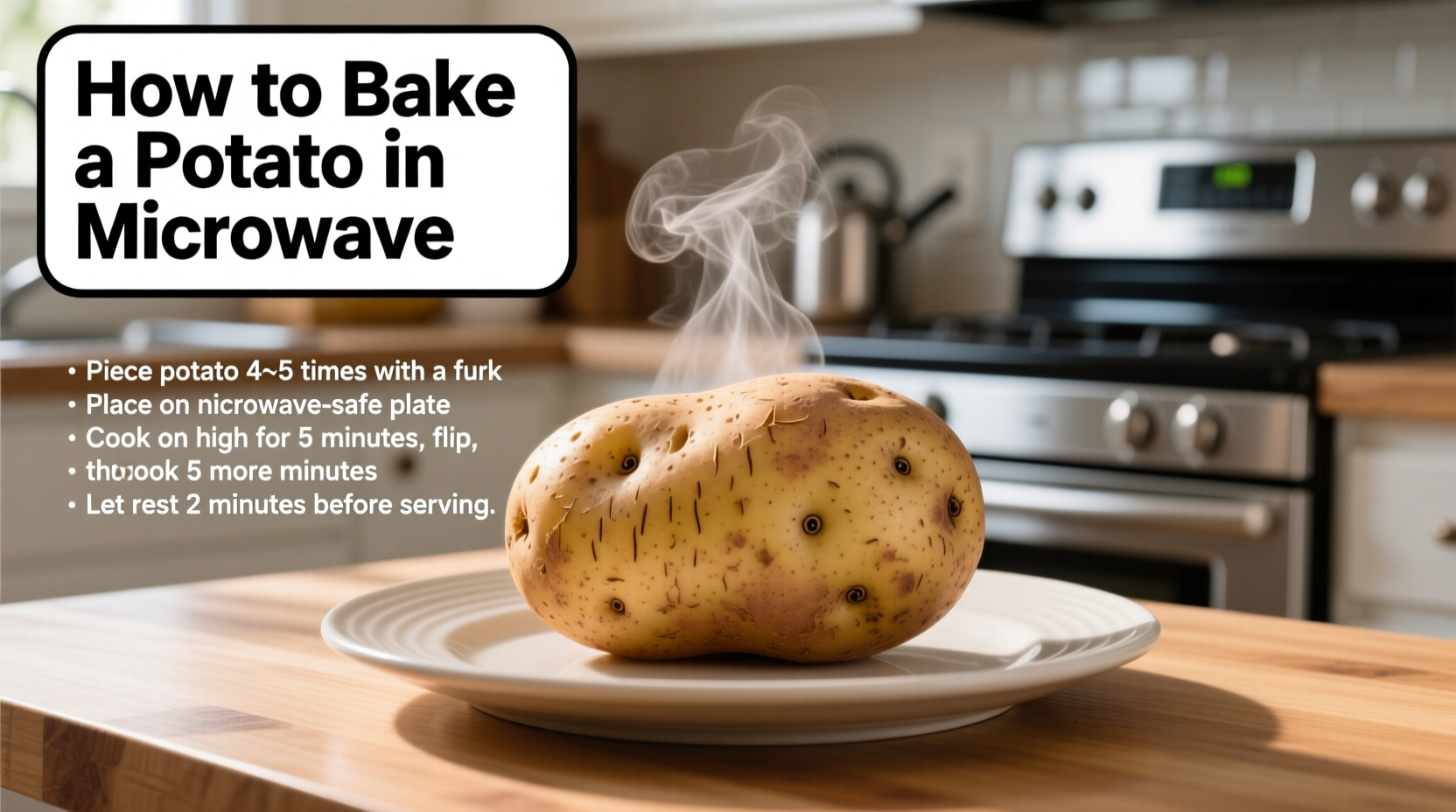The fastest way to bake a potato in the microwave is by washing it thoroughly, piercing it 4-6 times with a fork, placing it on a microwave-safe plate, and cooking on high for 5-7 minutes for a medium-sized potato (about 8 ounces), flipping halfway through. The potato is done when it reaches an internal temperature of 210°F (99°C) and gives slightly when squeezed.
Looking for a perfectly cooked baked potato in minutes instead of an hour? You've come to the right place. Microwaving transforms what's traditionally a 45-60 minute oven process into a quick 5-7 minute meal prep solution without sacrificing quality. Whether you're short on time before dinner, need a quick side dish, or simply want to save energy, this guide delivers restaurant-quality results with minimal effort.
Why Microwave Beats Oven for Quick Potato Perfection
While traditional oven baking has its merits, microwaving offers distinct advantages when time matters. According to the USDA Food Safety and Inspection Service, microwave cooking uses up to 80% less energy than conventional ovens while delivering comparable results for starchy vegetables like potatoes. The microwave's targeted energy penetrates the potato evenly, cooking it from the inside out rather than relying on slow conduction from the exterior.
Step-by-Step Microwave Baking Method
Potato Selection and Preparation
Choose medium-sized russet potatoes (about 8 ounces each) for optimal microwave results. Larger potatoes require significantly more cooking time and often cook unevenly. Wash your potato thoroughly under running water, using a vegetable brush to remove any dirt from the skin. This step is crucial for food safety as recommended by the FDA Food Code.
Piercing is non-negotiable - use a fork to pierce the potato 4-6 times around its surface. Cornell University's Food Safety Lab confirms this prevents dangerous steam buildup that could cause the potato to explode during cooking. Skip this step, and you risk creating a messy, potentially hazardous situation in your microwave.
Microwave Cooking Process
Place your prepared potato directly on a microwave-safe plate—no water or covering needed. For a standard 1,000-watt microwave:
- Medium potato (6-8 oz): 5-7 minutes
- Large potato (8-10 oz): 8-10 minutes
- Extra-large potato (10+ oz): 10-12 minutes
Cook on high power, flipping the potato halfway through cooking time. This flipping step ensures even cooking and prevents the bottom from becoming overly soft while the top remains undercooked—a common microwave pitfall.
Testing for Perfect Doneness
The most reliable method is checking internal temperature with an instant-read thermometer. As confirmed by USDA guidelines, potatoes are safely cooked when they reach 210°F (99°C) internally. If you don't have a thermometer, carefully squeeze the potato (using oven mitts!)—it should give slightly but not feel mushy. Undercooked potatoes will feel firm in the center.
| Potato Size | Microwave Time | Resting Time | Texture Result |
|---|---|---|---|
| Medium (6-8 oz) | 5-7 minutes | 3 minutes | Fluffy interior, tender skin |
| Large (8-10 oz) | 8-10 minutes | 4 minutes | Evenly cooked throughout |
| Extra-large (10+ oz) | 10-12 minutes | 5 minutes | Risk of uneven cooking |
Common Microwave Potato Problems Solved
Soggy Skin Syndrome
Microwaved potatoes sometimes develop softer skin than oven-baked versions. Solve this by transferring your cooked potato to a 400°F oven for 5 minutes after microwaving. This crisps the skin while maintaining the fluffy interior—a technique professional kitchens use for perfect texture balance.
Uneven Cooking Fixes
If your potato has cold spots, your microwave likely has uneven energy distribution. Rotate the plate 180 degrees at the halfway point in addition to flipping the potato. For best results, avoid stacking multiple potatoes—cook them individually with space between each.
Finishing Touches for Restaurant-Quality Results
After cooking, let your potato rest for 3-5 minutes—this allows residual heat to finish cooking the center evenly. Slice open, fluff the interior with a fork, and add your favorite toppings. For maximum flavor impact, rub the skin with olive oil and sprinkle with coarse salt immediately after cooking.

Microwave vs. Oven: When to Choose Which Method
Microwave baking shines when time and energy efficiency matter most. However, for special occasions where presentation counts, oven baking creates crisper skin and more complex flavor development through the Maillard reaction. The Cornell University Food Science Department notes that oven baking develops more nuanced flavors through slower caramelization, while microwaving preserves more nutrients due to shorter cooking time.
Pro Tips for Microwave Potato Mastery
- Wattage adjustment: Reduce cooking time by 15-20% for microwaves above 1,000 watts
- Moisture control: Pat potatoes dry before cooking for slightly crispier skin
- Batch cooking: Add 2 minutes per additional potato when cooking multiple
- Flavor infusion: Rub with garlic oil before cooking for subtle flavor penetration
Frequently Asked Questions
Can I wrap my potato in plastic wrap when microwaving?
While some methods suggest this, food safety experts at the FDA recommend against plastic wrap directly touching food during microwave cooking due to potential chemical migration. Use a microwave-safe plate instead.
Why does my microwave potato sometimes explode?
This happens when steam builds up inside without escape routes. Always pierce your potato deeply in multiple spots—shallow pricks won't prevent pressure buildup.
Can I cook multiple potatoes at once in the microwave?
Yes, but arrange them in a circle with space between each, and add 1.5-2 minutes per additional potato. Cooking more than three at once risks uneven results.
Is microwaving potatoes less nutritious than baking?
Actually, microwaving preserves more water-soluble vitamins like vitamin C due to shorter cooking time and less water exposure, according to research published in the Journal of Food Science.











 浙公网安备
33010002000092号
浙公网安备
33010002000092号 浙B2-20120091-4
浙B2-20120091-4